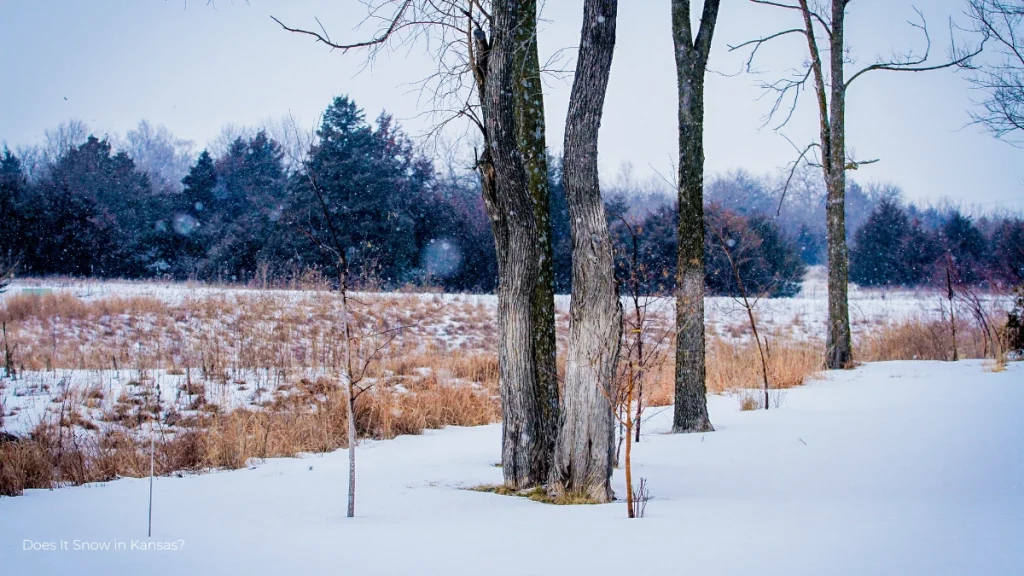
When people picture Kansas, they often think of endless golden wheat fields, rolling plains, and the occasional tornado siren—but snow? Absolutely. Kansas winters may not rival the deep snowpacks of the Rockies or Great Lakes region, but the Sunflower State experiences a surprising variety of winter weather, from light flurries to crippling blizzards.
The state’s location in the central U.S. places it at the meeting point of cold northern air and milder southern systems, creating unpredictable winter conditions. And if you’ve ever woken up to a dusting of snow and wondered, “Will school be closed?”—that’s where a Snow Day Calculator comes in handy.
Let’s explore how much snow Kansas gets, when it typically arrives, and how you can prepare for whatever winter has in store.
Does It Snow in Kansas?
Yes! Kansas gets snow every winter, but the amount and frequency vary significantly depending on the region. The state’s climate is generally continental, meaning cold winters and hot summers, but moisture levels change from east to west.
- Eastern Kansas (Kansas City, Topeka, Lawrence) tends to see more frequent snow due to higher humidity levels.
- Western Kansas (Goodland, Colby, Dodge City) receives less frequent snowfall, but when storms roll in, they can drop significant totals thanks to colder air masses.
- Southern Kansas (Wichita, Arkansas City) generally sees lighter snowfall, but ice storms can be a bigger concern here.
Average annual snowfall for Kansas as a whole is about 19 inches, but this average hides big differences:
- Goodland in the northwest averages around 37–40 inches a year.
- Kansas City averages about 18 inches.
- Wichita sees closer to 12–16 inches per winter.
Snowfall often comes in short, sharp bursts rather than long, drawn-out storms. This means a season can pass with minimal accumulation—only for one major blizzard to double the average in a few days.
When Does It Snow in Kansas?
The main snow season runs from December to February, but Kansas weather is famously unpredictable. You might see snowflakes as early as late October or as late as April. On rare occasions, snow has fallen in May in the northern part of the state.
- Early Season Snow: Light snow can occur in late October or early November, usually melting within hours.
- Peak Season: January is typically the snowiest month, often bringing multiple storm systems.
- Late Season Snow: March can deliver heavy, wet snow that clings to trees and power lines.
Because of the state’s variability, it’s common for some winters to have above-average snowfall while others barely leave a mark.
How Much Snow Does Kansas Get?
According to long-term National Weather Service and NOAA data:
- Wichita: ~15.7 inches per season
- Topeka: ~20.7 inches
- Concordia: ~21.7 inches
- Dodge City: ~20.3 inches
- Goodland: ~37.7 inches
- Kansas City Metro: ~18.2 inches
Some years, totals can swing wildly. For example:
- The 2011–2012 season saw only 3.9 inches in Kansas City.
- The 1911–1912 season brought a record 68 inches, the snowiest winter on record for the area.
Snowstorms & Extreme Winter Weather
Kansas’s most famous snow events are often tied to strong blizzards or winter storms that sweep in from the Rockies and merge with moisture from the Gulf of Mexico.
The 2011 Groundhog Day Blizzard
This massive storm buried parts of eastern Kansas under 12–20 inches of snow. Winds gusted above 35 mph, creating whiteout conditions and snowdrifts several feet high. Schools and businesses closed for days, and 53 counties declared disaster emergencies.
Other Notable Events
- February 2013 Storm: Dropped over 14 inches in Wichita in less than 24 hours.
- April 1997 Blizzard: Brought more than a foot of snow to western Kansas—late enough to cause major agricultural losses.
These storms highlight the need for preparation, as heavy snow can quickly impact travel, infrastructure, and daily life.
Snow Day Calculator: Predicting Closures Before They Happen
A Snow Day Calculator is a digital tool that estimates the likelihood of school or business closures based on multiple weather factors:
- Forecasted snowfall totals
- Temperature and wind chills
- Timing of the storm (overnight vs. daytime)
- Road conditions and ice accumulation
By entering your ZIP code, you can get a probability score—say, “65% chance of school closing tomorrow.” While not perfect, these calculators combine forecast models and local closure patterns to give you a heads-up.
Why use it in Kansas?
Because Kansas snowfall is unpredictable, parents, students, and employees benefit from an early gauge on whether travel might be risky. Pair it with official sources like the National Weather Service, AccuWeather, or the Farmers’ Almanac for the most reliable results.
Practical Tips for Handling Snow in Kansas
1. Winter Driving Safety
- Slow down and allow extra space between vehicles.
- Keep an ice scraper, blanket, and small shovel in your car.
- Avoid travel during blizzard warnings unless absolutely necessary.
2. Home Preparedness
- Stock up on non-perishable food and bottled water.
- Have a backup heat source in case of power outages.
- Keep sidewalks and driveways clear to prevent slips and falls.
3. Staying Informed
- Sign up for county emergency alerts.
- Check Weather.gov for storm warnings.
- Monitor local news for school and road closure updates.
Conclusion
Snow in Kansas is as diverse as its landscape. Some winters bring barely a dusting, while others transform the plains into a frozen wonderland overnight. Knowing when snow is likely, how much your area typically gets, and using tools like a Snow Day Calculator can help you plan ahead—whether that means prepping the car, stocking up at home, or letting the kids sleep in.
So, the next time clouds roll in and the forecast calls for snow, you’ll know exactly how to brace for it—and maybe even look forward to a surprise day off.
Curious if your school might be closed tomorrow? Try a Snow Day Calculator and get a head start on your winter plans.

